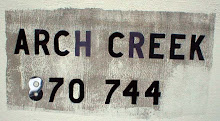 China tries to clean Beijing air for '08 Olympics. Story here.
China tries to clean Beijing air for '08 Olympics. Story here.
An environ-mental physiologist, Mr. Kolb visited several stadiums, and sneaked into a few others, to measure pollution with a small monitoring device. On Aug. 5, his measurement of fine particles pollution, or PM 10, reached 200, roughly four times above the level deemed safe by the World Health Organization. . . .
Beijing’s biggest problem is PM 10 and other particulates, which are attributed to construction, industry and cars.
Average daily levels of PM 10 exceed national and W.H.O. standards. In 2004, the concentration of airborne particulates in Beijing equaled that of New York, Los Angeles, Washington, Chicago and Atlanta combined, according to the United States Embassy in Beijing. Earlier this year, a report by the United Nations Environment Program concluded that “air pollution is still the single largest environmental and public health issue affecting the city.”
“Particularly worrying are the levels of small particulate matter (PM 10) in the atmosphere, which is severely deleterious to public health,” the report stated. . . .
Mr. Kolb said Olympic athletes were worried about ozone, which can inflame the respiratory tract and make it more difficult to breathe. But Beijing’s monitoring system does not measure ozone, nor does it measure the finer particulates known as PM 2.5.
This year, a team of Chinese and American scientists analyzed air quality issues for the Olympics and found that Beijing’s daily concentrations of PM 2.5 rated anywhere from 50 percent to 200 percent higher than American standards. Their study, published in the journal Atmospheric Environment, also found that ozone regularly exceeded levels deemed safe by American standards. . . .
“Beijing is a pollution source itself, and it is surrounded by other pollution sources,” Mr. Hu said. “When you have wind, it brings in pollution from other sources. When you don’t have wind, the local pollution cannot disperse.” . . .
(I'm sure the Chinese will figure it out.) Tiananmen Square pictured. (Photo by Oded Balilty/Associated Press.)

No comments:
Post a Comment